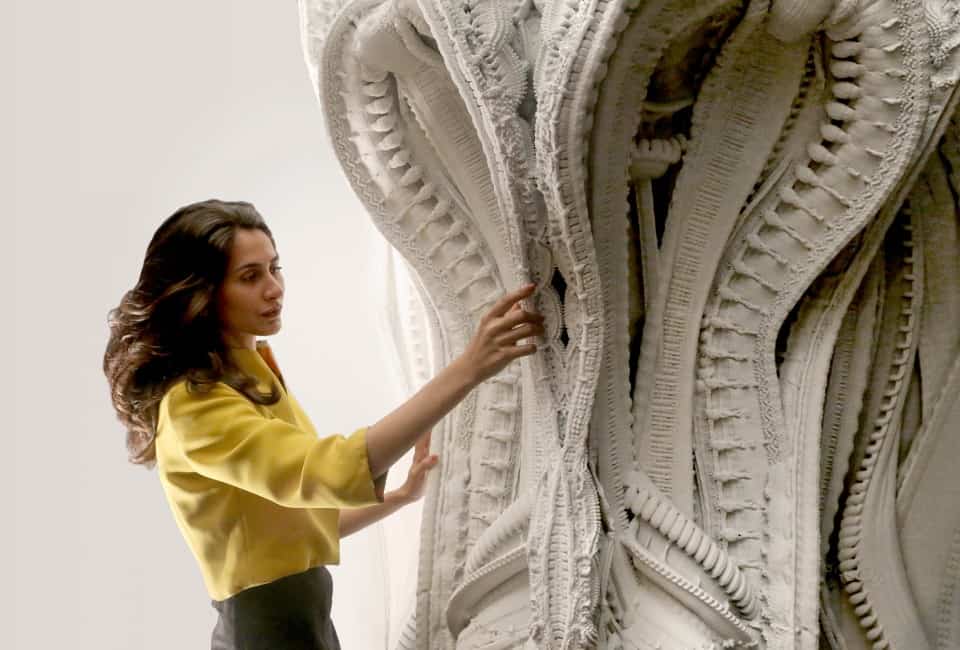Science and art are two subjects that often appear to be mutually exclusive. As is made evident by the recent large scale 3D printing exhibition, 3DXL, held in Toronto, this distinction is becoming increasingly blurred by modern technological advancements. One of the main attractions at the exhibition was a project titled “Arabesque Wall”. The wall was designed and created by architects Benjamin Dillenburger –— who is also currently an assistant professor of Architecture at the University of Toronto — and Michael Hansmeyer, in collaboration with Design Exchange, Toronto. The project took four months to design, four days to print, and four hours to assemble. The end product is a large 3D printed wall made up of 12 sandstone elements that stands approximately 10 feet in height, weighs 0.8 tons, and contains an astounding 200 million surfaces.
Dillenburger described part of the process of using 3D printing to bring the project to life, “the sandstone elements are fully enclosed by loose sand when they are coming out of the printer. One of the nicest moments of this project was the excavation of those elements, which feels like an archaeology of your own design.”
“Our inspiration was traditional arabesque ornaments,” Dillenburger also added, “Our project plays with the an iconic, geometric tradition of those ornaments by creating intricate constellations that are at once figurative and abstract. Just as arabesque ornaments, the compositional principles of the “Arabesque Wall” are both geometric and mathematical.”
The team designed the wall entirely using customized algorithms, instead of using the traditional pen and paper or a computer aided design program. “Shifting the design process to this abstract level has a dramatic impact. On the level of output, we can significantly increase the resolution — we can design structures with minute details at the threshold of perception,” says Dillenburger. With a resolution of just 0.2mm, the “Arabesque Wall” is truly a structure of extreme intricate detail.
According to Dillenburger and Hansmeyer, “Architecture should surprise, excite, and irritate. It must be judged by the experiences it generates.” By using these new technologies, the project allowed the designers to stretch the limits of their designing restraints and to fully express their vision in the design. In doing so, the design is also able to perceptually challenge the audience. “We specifically designed the architecture to evoke a sense of wonder, to make people curious, to make them want to discover it. We’d argue that people become more involved if the forms reveal themselves only upon a second or third view, if there is both the expected as well as surprise and joy,” Dillenburger explained.
In applying novel technologies to stretch the limits of artistic projects, this evolution in design also has the potential to pave the future of architecture. Dillenburger said, “It would be great to see new digital building technologies also applied for larger projects. A 3D-printed house, which radically exploits the potential of digital fabrication, would be a fantastic challenge as for me as an architect and as a researcher.”
Architecture and technology are always continuing to evolve together. According to Dillenburger, “We ought to use these technologies in an appropriate way: not by imitating existing designs, but by exploring the new freedom — through constant experimentation. Technology is an opportunity for the profession to once again seamlessly integrate aspects of engineering and beauty. In the end, our task is to constantly redefine the way we want to live, and the way we want to build our future houses.”


